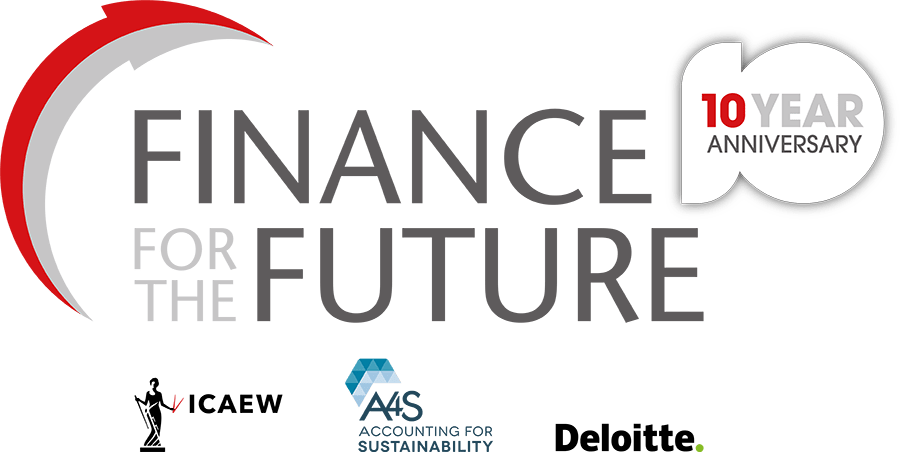Burberry is a British luxury retailer on a sustainability mission. The global fashion brand was recognised as a Climate Leader in the ICAEW-backed 2021 Finance for the Future Awards for its extensive climate-related work.
This included its innovative sustainability bond used to raise finance during the pandemic to fund its green buildings and sustainable product and packaging strategies.
Burberry will complete its latest five-year corporate responsibility strategy this year and has already taken industry-leading steps to advance the decarbonisation agenda, including cutting its market-based emissions by 92% since 2016. In 2022, the brand will be carbon neutral across its own operational use globally and use 100% renewable electricity.
Looking beyond 2022, the business has also set its next medium and long-term sustainability targets: reducing its Scope 3 emissions by 46% by 2030 and becoming net zero and ‘climate positive’ by 2040.
“Those ambitions were set in June and since then we have been building a detailed roadmap of activities required to deliver against those targets year by year,” says Ian Brimicombe, Burberry’s Senior Vice President, Group Finance. “We will continue to evolve the roadmap to drive progress across all our regions, functions and partners.”
A bond with nature
At the peak of the pandemic, Burberry reviewed its cash reserves, as lockdowns and COVID-19 restrictions closed all non-essential shops in many countries.
Given the uncertainty facing the business in early 2020, the board initiated a credit rating agency process and went to the debt market in 2020 to raise £300m to fund its sustainability plans. This meant working with Sustainalytics, an ESG and CSR research and ratings business, to develop a sustainability framework.
The business committed to spending the proceeds of that bond on various projects: environmentally sustainable management of living resources, pollution prevention and control and green buildings.
The business also negotiated a sustainability-linked revolving credit facility with its core lenders during 2021 to secure medium backstop funding. There are two sustainability KPIs attached to the facility as an incentive for Burberry to execute its sustainability agenda, including the commitment to reduce its scope 3 emissions.
Packaging plans
All of Burberry’s retail bags and boxes are reusable, recyclable and are certified by the Forestry Stewardship Council. The paper is produced from 40% upcycled coffee cups, and in 2019, 58m of them were upcycled into Burberry’s packaging. The business also uses upcycled hangers for transporting clothes and its garment bags are made from 100% recyclable polyester.
Plastic use is a key focus: part of the business’s 2025 plastic commitment is to eradicate unnecessary plastic use. “We are looking at it end to end in the production and movement of product as we get to the finished article, and delivery to the customers,” says Brimicombe. “We apply a global green standard to our packaging and we are making improvements all the time to make it more sustainable. We’re continually exploring ways to increase the percentage that is sustainable; we’re going beyond the benchmark that the industry sets.”
Plans for 2022
From 2022, it is mandatory for businesses to report their sustainability efforts under the TCFD framework. Burberry has developed its approach to TCFD disclosures over the past two years and will present its climate change risk assessment in its 2022 Annual Report and Accounts.
The TCFD legislation helps consumers to understand the impact of climate change on business in terms of physical and transitional risks and how the company is preparing to manage those risks. The disclosure requirements allow investors to compare companies and to assess how firms are meeting sustainability demands via standardised measures in company reporting.
As a result, Burberry is building a sustainability finance team and a sustainability strategy for the rest of the organisation, which the finance function will support. “We’ve got great people lined up for most of the sustainability finance roles, which is excellent. There’s certainly an appetite for more to get involved,” says Brimicombe.
The business wants integration of its sustainability agenda into the business’s decision-making. “We have some of that running already with decisions around capital expenditure with sustainability considerations,” says Brimicombe, “but we need the whole business to move forward, considering not only the commercial strategy and financial performance but also their sustainability outcomes.
A unified strategic approach will allow Burberry to meet its 2030 and 2040 targets, by ensuring that everyone across the business is working towards a shared vision. It is doing so by introducing incentives across the business to meet sustainability KPIs.
“The next step is to develop an annual plan for deliverables and allocate accountability to business leaders against each target. We are trying to incentivise the organisation in the sustainability dimension,” says Brimicombe.
“Whereas in the past we were incentivised on financial metrics, we are now looking to build KPI targets around sustainability targets. Success to me in 2022 will be building targets and incentives to reach our sustainability goals.”
Be a part of ICAEW's Retail Community
Curated content for finance professionals in all retail related sectors. Webinars that look at the hot topics impacting the sector. Access an array of resources, including reporting standards and changes in regulation, news and ICAEW content all in one place. Membership is free and open to everyone.

Finance for the Future excellence
The Finance for the Future awards programme is a partnership between ICAEW, A4S and Deloitte. The awards recognise and showcase high-quality examples of financial leadership. They're also about inspiring others, boosting ambition and building community by sharing knowledge and creating momentum for real change.


